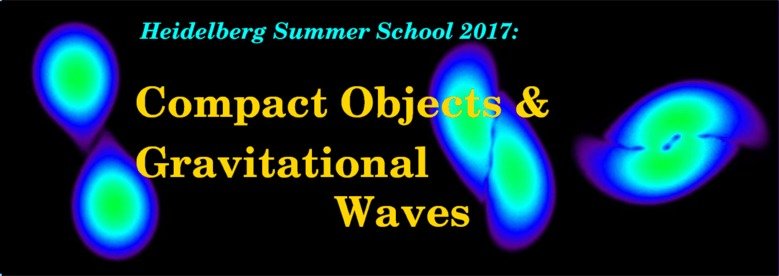Compact Objects & Gravitational Waves
The 12th Heidelberg Summer School took place September 11-15, 2017 at the "Max-Planck-Haus" (Max Planck House) in Heidelberg, Germany
Organization:
IMPRS for Astronomy and Cosmic Physics at the University of Heidelberg:
Max Planck Institute for Astronomy, Max Planck Institute for Nuclear Physics, Astronomisches Rechen-Institut, Institute for Theoretical Astrophysics, Landessternwarte Koenigstuhl, Heidelberg Institute for Theoretical Studies.
Scientific organizing committee: Andreas Bauswein & Friedrich Roepke (HITS), Rainer Spurzem (ARI).
Invited lecturers:
Thomas Baumgarte (Bowdoin College, Brunswick)
Tobias Fischer (University of Wroclaw)
Paulo Freire (MPIfR, Bonn)
Ewald Müller (MPA, Garching)
Nikolaos Stergioulas (Aristotle University, Thessaloniki)
Scope of the school:
Relativistic astrophysics and their objects, compact stars and black holes, is one of the most fascinating topic in astronomy. The recent discovery of gravitational waves has even boosted interest in this field.
The school has looked at the principles of relativistic astrophysics and nmerical methods applied, including properties of compact objects, how they form, how they are structured, and how they look like.
Topics that were covered include:
- Relativistic hydrodynamics, numerical relativity
- Gravitational waves
- Core collapse supernovae, formation of compact objects
- Structure of neutron stars, neutron star equation of state
- Compact object binaries, neutron-star mergers
Material:
- School participants
- School program
.


